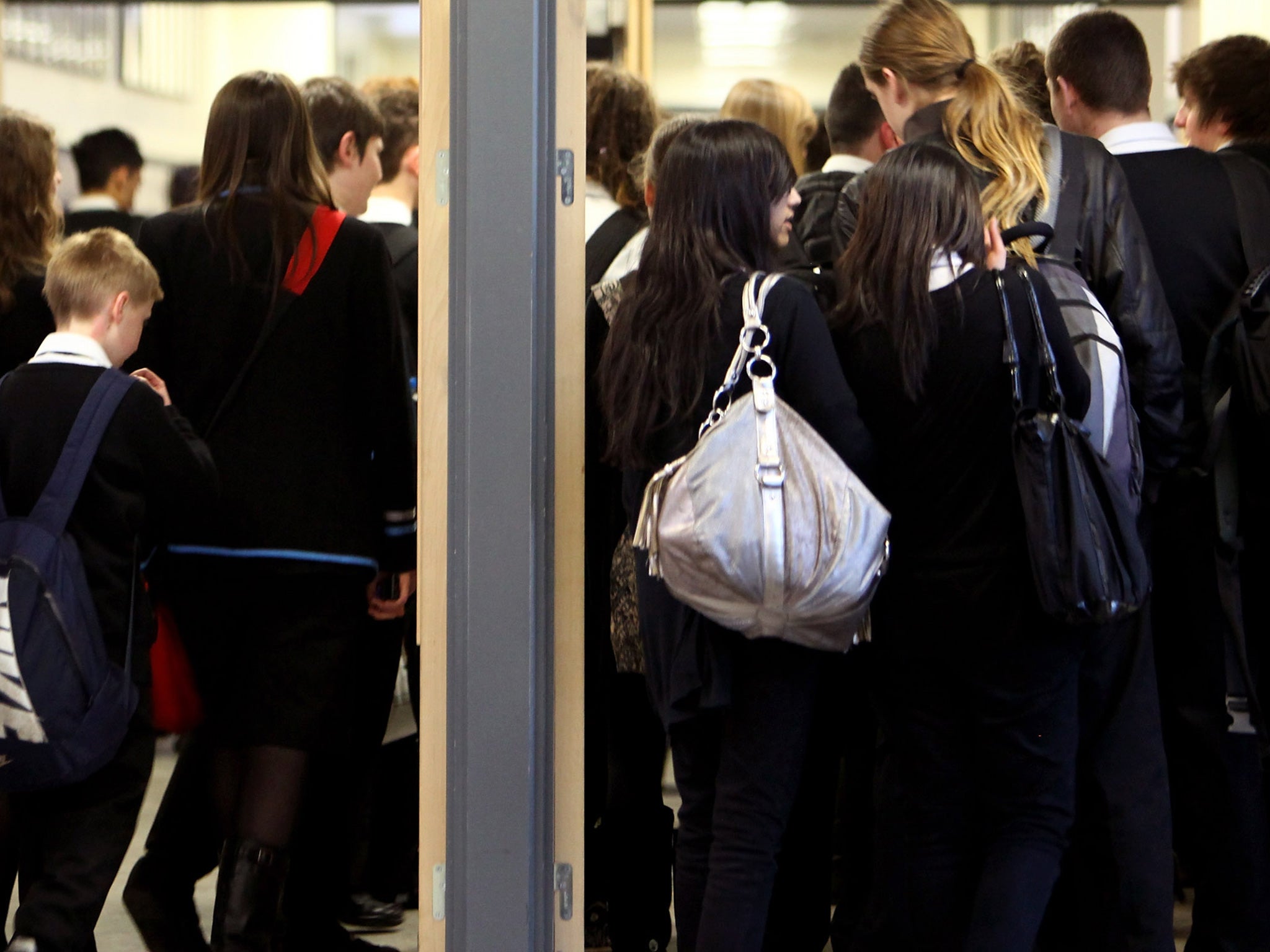Ofsted figures show ten areas where less than half of state secondaries are 'good' or better
Nicky Morgan has vowed to improve standards in 'coasting' schools

Your support helps us to tell the story
From reproductive rights to climate change to Big Tech, The Independent is on the ground when the story is developing. Whether it's investigating the financials of Elon Musk's pro-Trump PAC or producing our latest documentary, 'The A Word', which shines a light on the American women fighting for reproductive rights, we know how important it is to parse out the facts from the messaging.
At such a critical moment in US history, we need reporters on the ground. Your donation allows us to keep sending journalists to speak to both sides of the story.
The Independent is trusted by Americans across the entire political spectrum. And unlike many other quality news outlets, we choose not to lock Americans out of our reporting and analysis with paywalls. We believe quality journalism should be available to everyone, paid for by those who can afford it.
Your support makes all the difference.Parents in ten areas of the country are unlikely to find a good state secondary school for their children, according to new figures.
The latest statistical bulleting from education standards watchdog Ofsted reveals there are still ten local authority areas where more than half the secondary schools are “less than good”.
The ten - named in the report - are Bradford, Cambridgeshire, Derbyshire, Doncaster, Dudley, Hartlepool, the Isle of Wight, Knowsley, North East Lincolnshire and Oldham.
Ofsted said of the findings: “There are still areas of the country where a large proportion of schools are not good enough.”
The findings come as Education Secretary Nicky Morgan has declared her top priority to be securing improvements in standards in the country’s “coasting” schools - those not in disadvantaged areas that are not delivering the exam results that they should be.
Her main weapon in her battle to tackle the situation is new legislation giving regional school commissioners the power to compel these schools to become academies.
However, the data released by Ofsted shows the gap in performance between local authority maintained schools and academies to be narrowing.
At the end of august 2014 there was a four percentage point gap between the proportion of good or outstanding primary academies compared to local council schools (85 per cent and 81 per cent respectively). Now the percentage for both groups is 83 per cent.
At secondary level, 76 per cent of academies are rated good or better compared to 67 per cent of secondary maintained schools - a gap that has narrowed from 13 per cent last August.
However, the shift could be accounted for by the Government’s concentration on compelling poorly performing schools to become academies.
The overall picture shows that 82 per cent of all schools are good or better - the highest proportion ever recorded and up one percentage point since last year.
Education Secretary Nicky Morgan said the rise meant there were more than a million more pupils in good or outstanding schools than when the Coalition began its education reforms in 2010.
However, Kevin Courtney, deputy general secretary of the National Union of Teachers, warned that the difference between a “good” and “requires improvement” school could be “arbitrary or downright unfair”.
“Thousands of schools are now under threat from Nicky Morgan, who is determined t force academy status upon any school defined as ‘failing’ or ‘coasting’”, he added. “As she remains unable to specify what she even means by ‘coasting’, it is quite possible that no school in future will be safe.”
Join our commenting forum
Join thought-provoking conversations, follow other Independent readers and see their replies
Comments